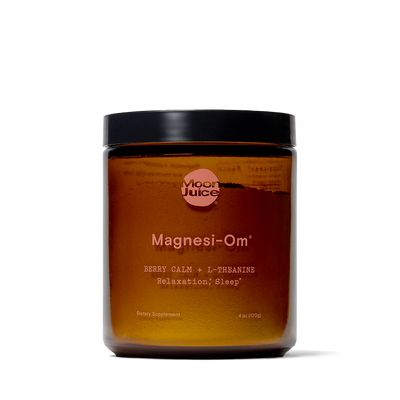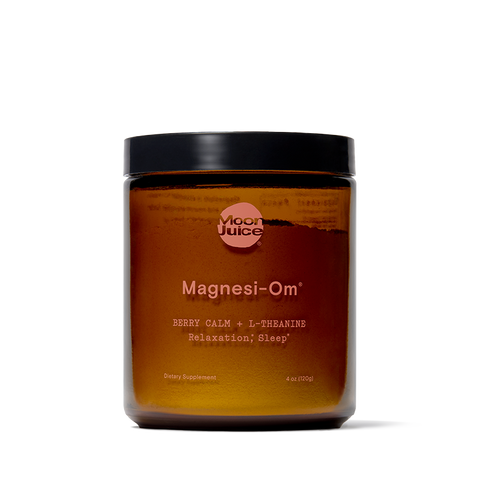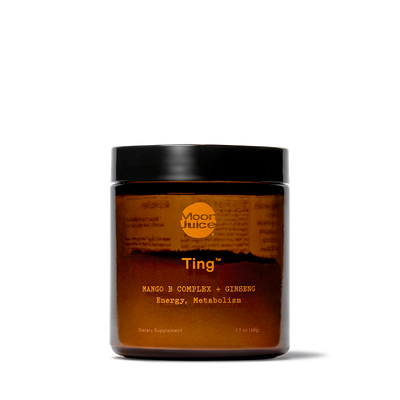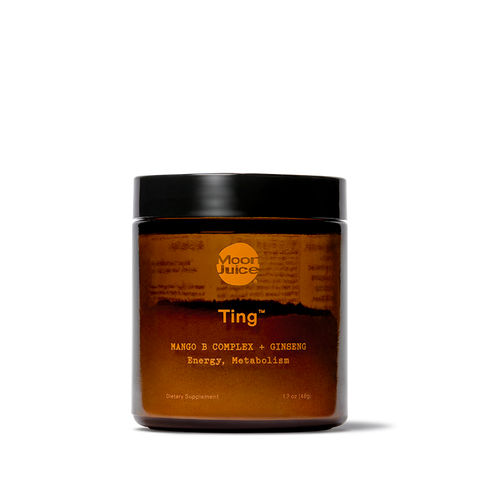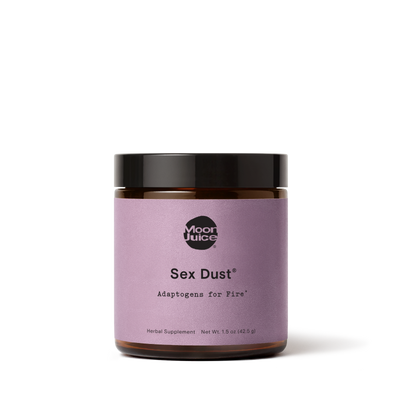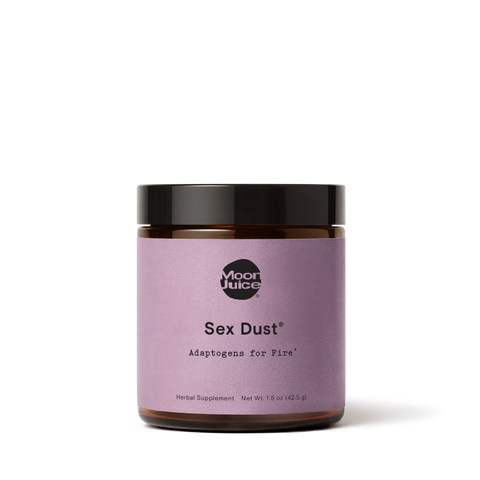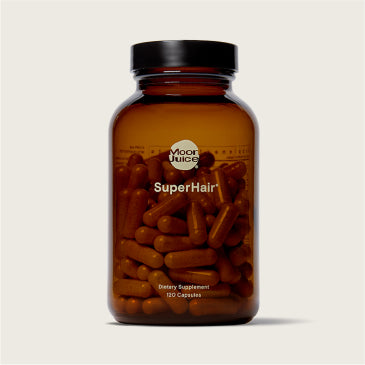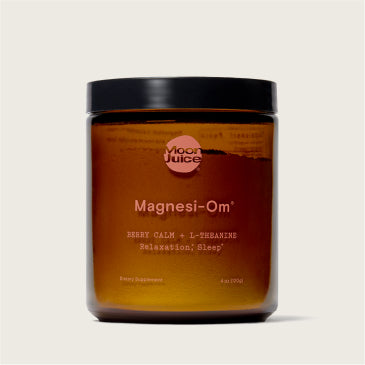Perimenopause, for many, feels like an in-between state. It signifies a significant shift in your life: the phase just before menopause fully sets in, when menstruation (and fertility) stops.
Because there’s no test to determine when you’re entering perimenopause, the most noticeable signs are the hormonal changes. Amanda recently spoke to Dr. Jolene Brighten, a board certified naturopathic endocrinologist, clinical sexologist, and a leader in women’s medicine, for her best advice on navigating through the hormonal changes involved in perimenopause. While that may, potentially, involve hormone replacement therapy, Dr. Brighten’s work first focuses on supporting your body as it transitions into menopause.
“I want to do whatever I can to get the ovaries doing their best for as long as they can, because nothing beats what your ovaries do themselves,” Dr. Brighten says.
Read on for more about the hormonal changes during perimenopause, how to identify the symptoms of perimenopause, and how to balance your hormones along the journey.
What is Perimenopause?
Perimenopause is the period just before menopause begins. It may last anywhere from a couple years to nearly a decade. During perimenopause, you may still get a period, but it will become shorter and less regular before eventually dropping off altogether. Your body gradually becomes less fertile as your egg production slows, and you produce fewer hormones, such as estrogen and progesterone.
While early menopause can happen at different ages for everyone, it commonly begins around your mid to late 40s.
Hormone Level Changes During Perimenopause
“DHEA (or dehydroepiandrosterone) is the hormone from your adrenal glands that declines starting in the mid-20s,” Dr. Brighten explains. “It's super lame, but it does. And why it's lame is because it's an anti-aging hormone. It's also the precursor to estrogen and testosterone.” Your mid-20s are much earlier than the age at which you’ll reach perimenopause, but it’s important to understand the scope of how perimenopausal hormonal changes begin.
Estrogen naturally circulates throughout the body during your menstrual cycle, rising and falling at a fairly predictable rate. The follicles (the sacs in your ovaries that contain eggs) produce the estrogen; once estrogen reaches a certain level, it signals the brain to produce something called the luteinizing hormone, which causes the ovary to release an egg, or ovulate. After ovulation, the remaining follicle produces progesterone along with estrogen to prepare for a potential pregnancy.
When perimenopause occurs, this ovulation and menstruation cycle slows and eventually stops. These hormones that your body has become so used to are now no longer as regular. The body slows progesterone production and the number of follicles diminishes, which causes a decline in estrogen. Typically, early menopause sets in when estrogen levels decrease by 80% or more and menstrual periods stop for one full year.
For some women, FSH (follicle stimulating hormone) levels may rise during perimenopause to attempt to get the ovaries to produce more estrogen. In some cases, estrogen levels may even spike to abnormally high levels before eventually dropping off.
Symptoms of Perimenopause Hormonal Changes
“If you believe you have perimenopause, or you're 35 or older, understand that there's no test for your ovarian or sex hormones to know absolutely that you're in perimenopause. We actually work off of symptoms,” Dr. Brighten says. “I ask for a patient’s symptoms so that I can access the important data: your personal experience.”
Symptoms of perimenopause include:
- Mood swings and changes
- Libido fluctuation
- Hot flashes and/or night sweats
- Headaches
- Impaired sleep
- Weight gain
- Vaginal dryness
- Muscle cramps or aches
How to Balance Hormones During Perimenopause
These symptoms likely signify that your body is headed toward menopause, but it doesn’t mean that you have to blindly suffer through the discomfort of these hormonal fluctuations. “In perimenopause, we start to see the decline of brain function, which we're told is normal. Brain fog is normal. Hot flashes are normal. Insomnia is normal. Your anxiety is normal,” Dr. Brighten says. “It's not. It's a sign that your brain is in need of hormonal stimulation.”
While you cannot reverse perimenopause or menopause in your body (nor should you try to), there are ways to balance your hormones through lifestyle changes and hormone therapy that may make the transition smoother and more enjoyable.
Food
The foods you eat affect your hormone levels, so tailoring your diet to the perimenopausal stage may help you during your menopausal transition. An appropriate diet may also help you to find some comfort while dealing with the discomfort of hormonal changes. Here’s what to focus on are some hormone balancing foods to consider when managing your perimenopausal symptoms:
- Omega-3 fatty acids. Omega-3 fatty acids like fatty fish, flaxseed oil, and walnuts help combat inflammation, regulate your mood swings, and even enhance cognitive function, which tends to diminish during perimenopause.
- Protein. Protein from high-quality sources like lean meats, nuts, and legumes help to balance hormones and supplement muscle mass lost during perimenopause.
- Fiber. A high-fiber diet filled with fresh fruits, vegetables, and whole grains will lessen hormonal cravings and help you to maintain a healthy weight.
Vitamins and Supplements
While food is the foundation of your nutrient intake, you can also supplement the vitamins and minerals you’re not getting enough of to support perimenopause hormonal changes. Here’s are some vitamins and supplements to balance hormones:
-
B Vitamins.
Dr. Brighten recommends Vitamin B6 and other B Vitamins to support the adrenal glands, as they can produce estrogen even after your ovaries have stopped.
- Vitex. Vitex is an herbal supplement sourced from the fruit and seeds of the chasteberry plant. Dr. Brighten recommends a Vitex supplement as a way to keep progesterone up once it starts decreasing in perimenopause, and certain studies show that it may be helpful in mitigating perimenopause symptoms like hot flashes.
- Calcium. Studies show that estrogen and other hormones play a key role in bone mass growth and maintenance. When estrogen diminishes during perimenopause and menopause, you may experience bone loss and osteoporosis. Supplementing with Calcium can help to keep bones strong.
- Vitamin D. Vitamin D helps to support healthy bones and maintain a healthy weight, both concerns during perimenopause.
- Adaptogens. Adaptogenic supplements to support adrenal function and manage stress are important as you enter perimenopause. Try Rhodiola to help reduce fatigue, Ashwagandha to prevent irritability, and Shatavari for hormonal balance.
Movement and Exercise
When you have a hormonal imbalance, it’s important to stay active to balance your hormones naturally and strengthen your bones, as many women experience bone loss. Exercise also enhances endorphins to improve mood changes and help prevent cognitive decline.
Stress Management
Your body is going through a host of hormonal changes from premenopause — and while they’re all totally normal, it’s important to stay calm and give yourself time to adjust. Balance cortisol levels (things like meditation, breathwork, adequate sleep, orgasm, time in nature, and other natural remedies for stress relief can help) to keep stress low and put yourself in a good place to enter perimenopause.
Hormone Replacement Therapy
“If you’re really curious and are having symptoms that are hijacking your life, hormone replacement therapy is something worth pursuing,” Dr. Brighten says. This involves supplementing the body with estrogen, progesterone and/or testosterone under the supervision of a knowledgeable professional to help mitigate perimenopause symptoms. “Generally speaking, when you get into the 12 month sprint before you’re definitely going to be in menopause, that’s when we consider progesterone. Then, once the ovaries quit, that's usually when we go into the estrogen.” While hormone replacement therapy is not for everyone, Dr. Brighten recommends considering it once you’re edging closer to menopause. “If you get the brush off from your doctor, meet with somebody who actually does hormone replacement therapy and can guide you through this on an individualized level.”
Sign Up, Nerd Out
Get wellness tips, education, and recipes
delivered straight to your inbox.
Get wellness tips, education,
and recipes delivered
straight to your inbox.
In Conclusion
There’s no avoiding perimenopause and its hormonal changes, and the best way to manage your symptoms during this menopause transition is with a holistic approach. “Just because you do hormone replacement therapy doesn't mean that's where it ends,” Dr. Brighten says. “For my patients on hormone replacement therapy, we still work on lifestyle changes and nutrition. If we’re using estrogen, we’re going to support liver detox pathways because we want the healthiest levels of estrogen metabolites. And we’ll still support gut health by bringing in things like Calcium-D-glucarate so we don't get conjugation of estrogen.”
Sources
- https://www.britannica.com/science/menopause
- https://www.ncbi.nlm.nih.gov/pmc/articles/PMC5643776/
- https://www.ncbi.nlm.nih.gov/pmc/articles/PMC6071442/
- https://www.ncbi.nlm.nih.gov/pmc/articles/PMC7168978/
- https://www.ncbi.nlm.nih.gov/pmc/articles/PMC6742725/
- https://www.ncbi.nlm.nih.gov/pmc/articles/PMC6770041/
- https://www.tandfonline.com/doi/abs/10.1080/09513590.2018.1499086?journalCode=igye20




